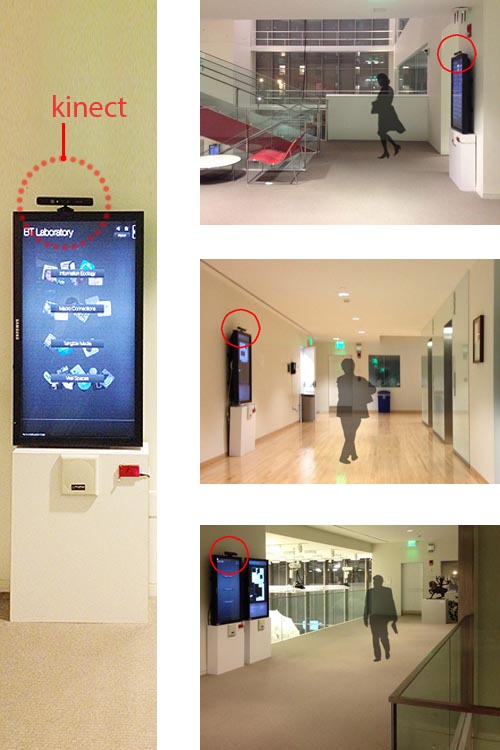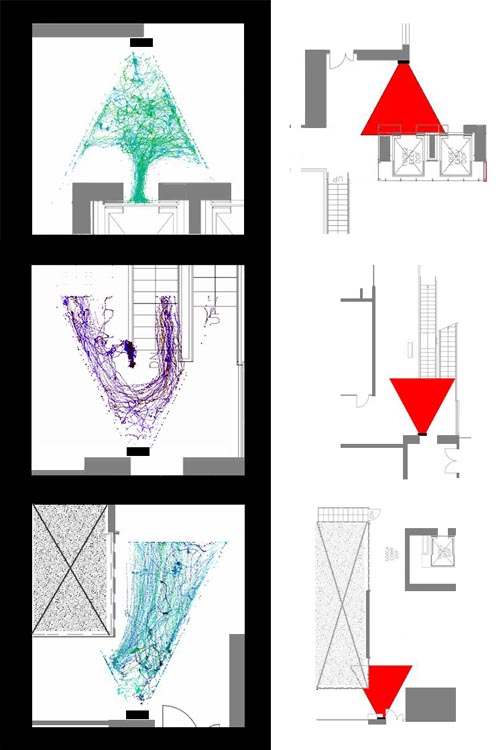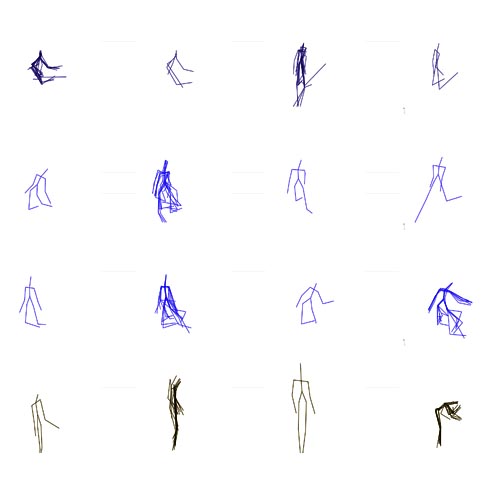Space/Crowd Interactions -Tracking people's motion in architecturePaloma Gonzalez Rojas Final project for the MIT class 4.566 Advanced Project in Digital Media
|
|
|
This visualization shows a top view of people getting into and out of an elevator. It is recorded over a whole day at MIT's new Media Lab building. The positional and skeltal motion of people were captured with Kinect.
Movie info: 480x320 pixels, mp4, 3 minutes playing at 3x speed This project was made possible thanks to the courtesy of Nick Guillian and Prof. Joe Paradiso who generously granted me access to the recording data from their previous research project titled "Gestures Everywhere." A 640x480 pixel version is available here at YouTube |
|
Project OverviewThe understanding of space relies on motion, one might say, as we experience space by crossing it.
When people move in space, they leave an unseen trace that has not been possible to accurately record and reproduce until very recently.
|
||
 |
Fig 1. Locations
A set of 8 locations were selected to study people's behavioral reactions in various architectural context. The illustration shows three examples of different spatial forms and functions.
Top: Stairs and landing |
 |
Fig 2. Position data The positions of people recorded with the kinects appear as triangles since the Kinect’s sensing range is triangular in a 3.5 x 3.5 meter area. The colors differentiate sampled people. The visualizations show some emergent patterns of behavior in each architectural situation, which sometimes do not fit with our pre-conception of what people do in a specific place. This research provides important observations to account for further development. |
 |
Fig 3. Skelton data The skeleton data retrieve the information of detailed postures of people in space. For instance, you can tell if a person looked down from a gallery floor over the handrail, or leaned back against the handrail. At a location with a bench, a person may be found sitting on it or just standing by it. |
Fig 4. Visualizations This video shows six visualizations streamed simultaneously and abstracted from their context. Also available at YouTube. |
Future development This experiment encountered several drawbacks such as insufficient KINECT range to properly analyze an architectrually meaningful spatial situation. Use of multiple Kinects or new version of Kinect with wider range would be a solution. Further development will focus on retrieving statistical data in more architectural settings and forming the catalog of human reactions to various spatial context in built environment, especially those designed with distinct architectural forms .
|